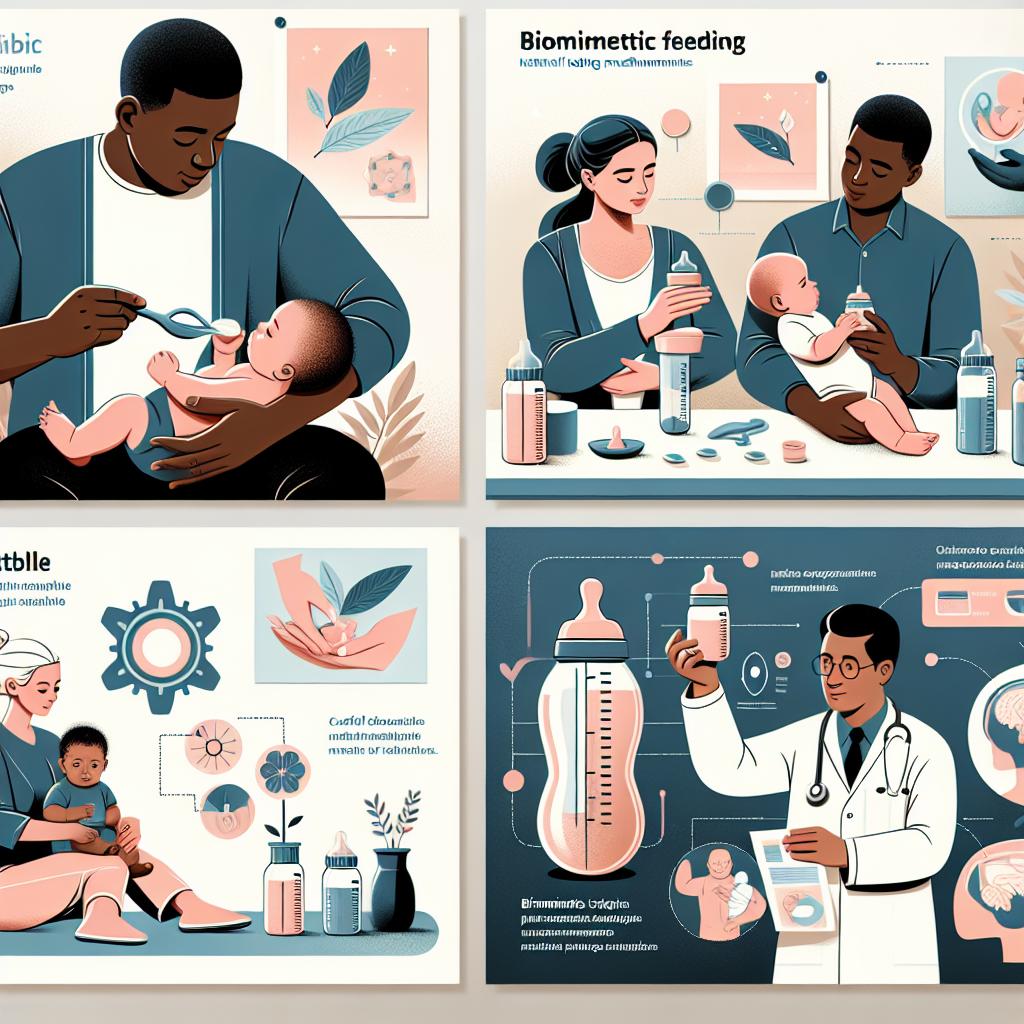Promoting Baby’s Health with Biomimetic Feeding Techniques
Understanding Biomimetic Feeding Techniques
Feeding your baby is much more than merely providing nutrition; it’s a bonding moment that strengthens your connection. Over the years, several methods and tools have been developed to make this process easier and more effective. The most advanced among these is biomimetic feeding techniques, a set of practices, and tools designed to mimic natural breast-feeding as closely as possible.
The Advantages of Biomimetic Techniques
These techniques offer numerous benefits for both the baby and the parent. They aim to provide an experience that is as close to natural breastfeeding as possible, replicating the feel, flow, and motion. Here are a few key advantages:
- Improved digestion: Biomimetic techniques can improve your baby’s digestion by replicating the natural flow of milk from the breast. This can help prevent issues such as colic, gas, and reflux.
- Bonding: The closer replication of the breastfeeding experience aids in maintaining the mother-infant bond, providing improved comfort and familiarity to the baby.
- Transition: For mothers who need to switch between breastfeeding and bottle-feeding, biomimetic feeding techniques can help in making this transition smoother for the baby.
Choosing the Right Tools for Biomimetic Feeding
The tools you use for feeding your baby play a significant role in implementing biomimetic techniques. Among these, the choice of bottle is crucial. Biomimetic bottles are specially designed to replicate the natural feel and flow of the mother’s breast. They help ensure that your baby is comfortable and can feed efficiently, enhancing their overall growth and development. To learn more, you can explore the healthiest bottles for breastfed babies.
Creating Calm Feeding Moments
Besides employing the right feeding methods and tools, creating a relaxed feeding environment is also essential. Here are a few biomimetic tips to ensure calm feeding moments:
- Offer the bottle at a slight angle to mimic the natural position during breastfeeding.
- Hold your baby close to give them a sense of security and comfort.
- Switch sides midway through the feed, just like during breastfeeding, to promote eye development and physical comfort.
Remember, every baby is different, and what works for one might not work for another. Stay patient, try different feeding methods, and consult professionals if needed. As a caregiver, it’s your love and dedication that will make the most significant difference in your baby’s growth and wellbeing.
Further Research on Biomimetic Techniques
While biomimetic feeding techniques are gaining traction, extensive research is underway to evaluate these techniques’ efficacy. Studies conducted by institutions like the University of Toledo are adding credibility to the benefits of biomimetic feeding. As we continue to understand the science of these methods better, we can hope for more advanced tools and practices to make feeding even more natural and beneficial.
Understanding the Science Behind Biomimetic Feeding
Biomimetic feeding techniques are backed by substantial scientific research. They aim to replicate the baby’s transition from the womb to the outside world while feeding. A research project funded by the National Institutes of Health in the United States revealed how the biomimetic approach could reduce feeding-related complications in premature infants.
Research on Mimicking a Mother’s Feeding Behavior
Understanding how a mother’s feeding behaviors can be mimicked forms a significant part of the study. Biomimetic techniques take guidance from a research study that investigated the importance of mother-infant synchronization during breastfeeding and simulated it in bottle-feeding.
Development of Biomimetic Tools
Several brands and products are continually striving to perfect the biomimetic technique by creating tools that promise to enhance the bottle-feeding experience. These products take design inspiration from research like the NIH-funded project that studied the anatomical structure of the maternal breast during lactation. These innovations in design have resulted in more natural bottle-feeding experiences for infants.
Biomimetic Techniques and Your Baby’s Growth
Biomimetic techniques are believed to foster optimal growth in your baby in the early stages of life. The natural and rhythmic feeding pattern these techniques adopt can contribute to the development of your baby’s oral muscles, which in turn aids in their overall growth. Research provides valuable insight into how using a biomimetic approach can holistically promote a baby’s development.
Biomimetic Techniques and Preterm Babies
For preterm babies, adapting to feeding can prove to be more challenging. Biomimetic feeding techniques are specially designed to cater to their needs. By replicating the breast’s natural feel and flow, these techniques can make feeding easier for the tender digestive systems of such infants.
Understanding Your Baby’s Needs
While adopting biomimetic techniques, it’s important to understand that babies may react differently to them. What works for one baby might not work for another. Therefore, caregivers are advised to carefully observe their baby’s feeding pattern and comfort level with these techniques. The ultimate goal should be to employ a feeding method that helps keep your baby relaxed and happy.
Given that biomimetic feeding techniques are relatively newer concepts in child care, additional research will continue to uncover their potential benefits and improvements. However, even now, they show promise in providing a more balanced, comfortable, and beneficial feeding experience for your baby.






